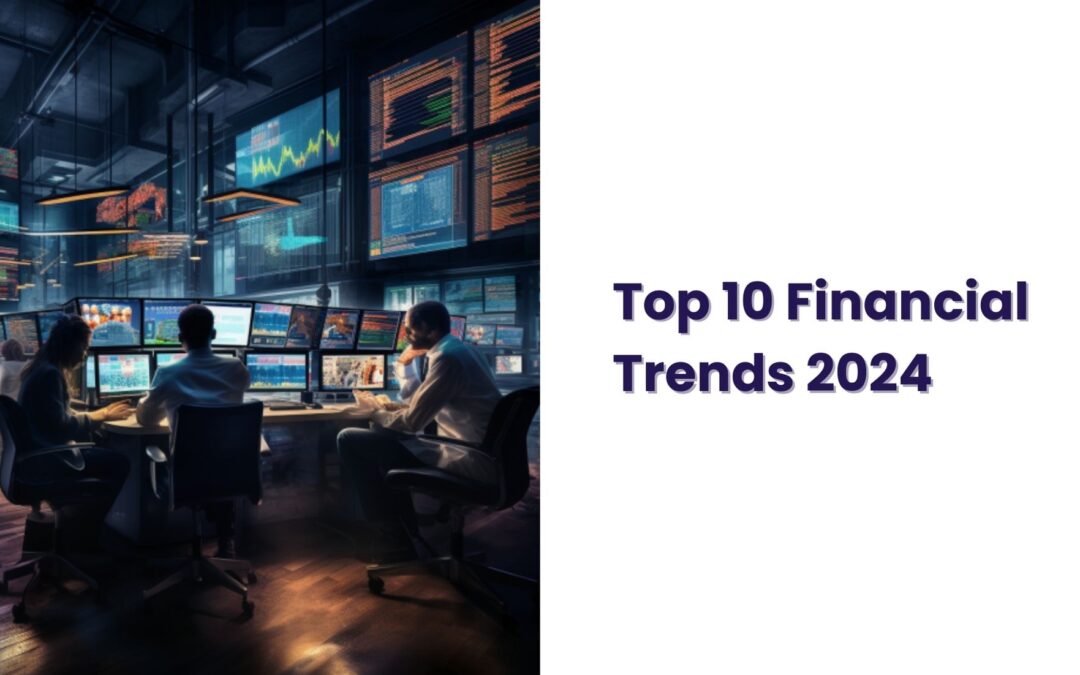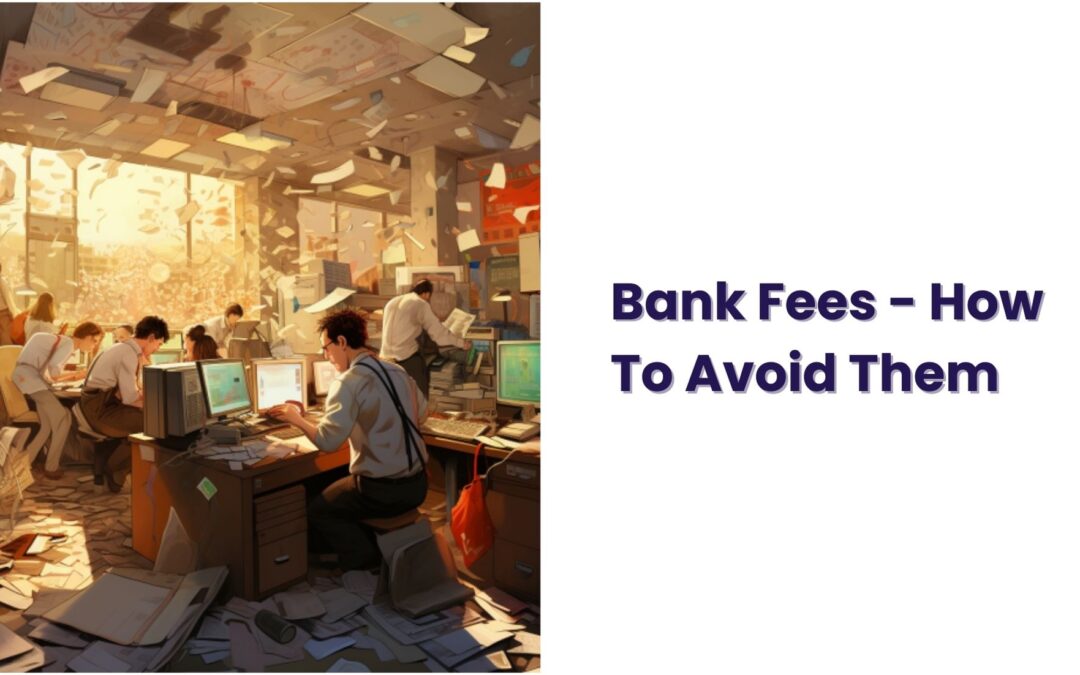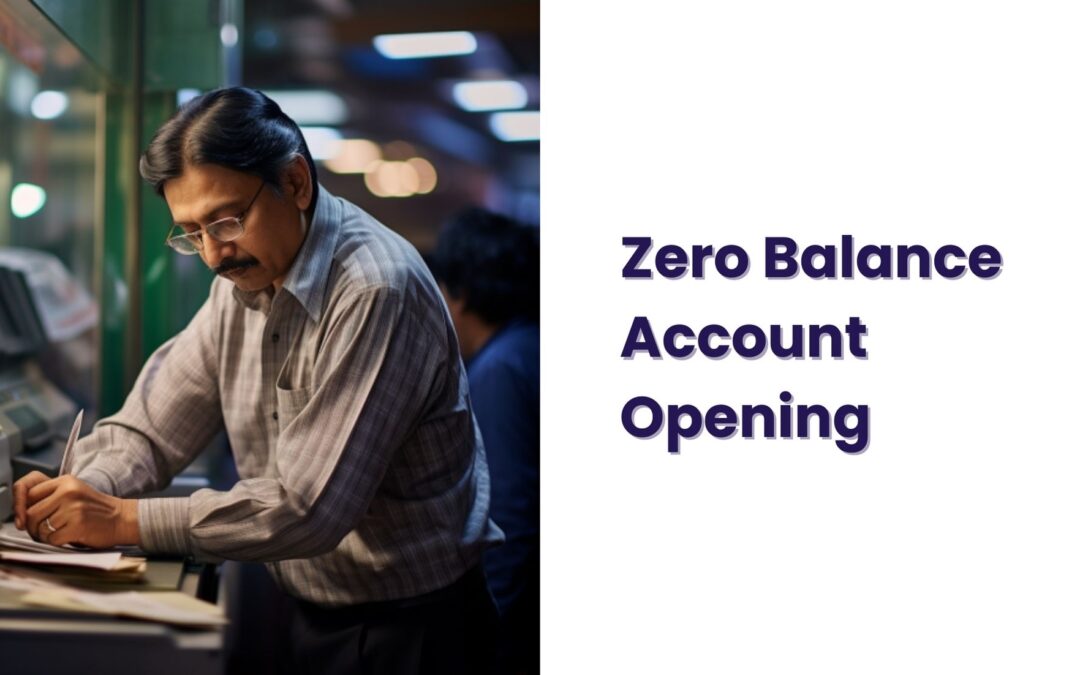
by Toulika | Nov 18, 2023 | Culture & Money, Investment, Savings
In an era marked by constant change, the financial landscape of 2024 stands at the forefront of innovation and transformation. As we peer into the near future, it becomes evident that the way we approach finance is undergoing a significant paradigm shift. This article aims to dissect and explore the ten pivotal financial trends that are poised to shape the economic trajectory in the coming year.
Ever heard of digital gold? It is just like everyday gold – just secured in an online platform. Download the Jar App to save your money in 24k digital gold.
1. Decentralized Finance (DeFi): Revolutionizing Traditional Banking
The buzz surrounding Decentralized Finance, or DeFi, has transcended the realm of niche discussions, becoming a formidable force in reshaping traditional banking structures. As we traverse the corridors of financial evolution, DeFi emerges as a disruptor, challenging the very foundations of centralized banking. From peer-to-peer lending to blockchain-based transactions, the possibilities within DeFi are limitless, offering a glimpse into a future where financial intermediaries take a backseat.
2. Cryptocurrency Resurgence: Beyond the Bitcoin Surge in Financial Trends
While Bitcoin’s meteoric rise has been the talk of the town, the cryptocurrency landscape is far from a one-coin show. As we venture deeper into the Financial Trends of 2024, the resurgence of alternative cryptocurrencies and tokens comes into sharp focus. These digital assets, each with its unique value proposition, are poised to redefine the crypto narrative. From Ethereum’s smart contracts to the innovative solutions presented by emerging altcoins, the world of digital currencies is a dynamic ecosystem with multifaceted opportunities.
3. Sustainable Investing: Merging Profit and Planet
The intersection of finance and sustainability is no longer a fleeting Financial Trend but a fundamental shift in investment philosophy. Sustainable investing is not merely a checkbox for ethical considerations. It’s a strategic approach to align financial growth with environmental and social responsibility. Investors are increasingly recognizing the power of capital to drive positive change. 2024 is set to witness an upsurge in sustainable investment opportunities, creating a symbiotic relationship between profit and planet.
4. AI-Powered Trading: Navigating the Algorithmic Frontier
The infusion of Artificial Intelligence into trading practices marks a significant milestone in the evolution of financial markets. As we navigate the algorithmic frontier, AI-powered trading systems are proving to be more than just sophisticated tools. They are becoming indispensable partners for investors, leveraging data analytics and machine learning to make split-second decisions. This shift towards AI-driven strategies is not just a trend; it’s a seismic transformation in how we perceive and execute investment decisions.
5. Upcoming Financial Trends – NFTs and Digital Assets: Redefining Ownership
What started as a niche within the art world has now evolved into a financial phenomenon. Non-fungible tokens (NFTs) have transcended their initial purpose, infiltrating various industries and redefining the concept of ownership. From digital art to virtual real estate, NFTs represent a new paradigm where ownership is no longer bound by physicality. The financial implications of this digital ownership revolution are vast and varied, opening doors to innovative investment opportunities and novel forms of value creation.
6. Remote Financial Services: The Dawn of Virtual Banking
The concept of physical branches is fast becoming obsolete as we usher in the era of virtual banking services. The digital revolution in finance extends beyond transactions; it encompasses the entire banking experience. Virtual banks offer unprecedented convenience, allowing users to manage their finances with a few taps on their devices. As Financial Trends of 2024 unfold, expect the proliferation of virtual banking solutions to redefine not just how we transact but how we perceive the very essence of banking.
7. Personalized Financial Apps: Tailoring Solutions to Your Needs
Generic financial advice is a relic of the past, replaced by the era of personalized financial applications. These apps leverage advanced data analytics to tailor solutions that align with individual financial goals and circumstances. The era of one-size-fits-all financial guidance is giving way to bespoke strategies, ensuring that users receive advice and services that resonate with their unique financial profiles. This shift towards personalization heralds a new era of user-centric financial experiences.
8. Biometric Security: A New Era of Financial Safety
The age of traditional passwords and PINs is waning as biometric security takes center stage. The financial industry is witnessing a paradigm shift towards enhanced security measures. Fingerprints, facial recognition, and other biometric identifiers replace conventional authentication methods. This not only fortifies financial data against potential breaches but also streamlines the user experience. It is making transactions more secure, seamless, and tailored to individual users.
9. Global Financial Inclusion: Bridging Gaps with Fintech
Financial technology, or fintech, is not merely a convenience; it’s a powerful tool for fostering global financial inclusion. As we traverse the digital frontier, fintech in Financial Trends is breaking down barriers. This is ensuring that individuals across the globe have access to essential financial services. From mobile banking in remote areas to blockchain-based solutions for the unbanked, fintech is a catalyst. It is creating a more inclusive and accessible financial landscape.
10. Rise of the Subscription Economy: Financial Trends
The subscription-based model, once confined to streaming services, is permeating the financial industry, offering users unprecedented flexibility. In 2024, financial services are adopting this approach, allowing users to customize their financial experiences through subscription-based models. Whether it’s tailored investment portfolios, premium financial advice, or exclusive perks, the subscription economy is redefining how users engage with and access financial services. This is providing a level of flexibility that was previously unimaginable.
Future of Financial Trends
As the curtain rises on 2024, these ten financial trends stand as beacons illuminating the path to a new era of economic dynamics. From decentralized finance to the rise of NFTs, each trend signifies not just a change but a transformation in how we perceive, interact with, and benefit from the financial world. Stay informed, stay ahead, and embrace the financial landscape of tomorrow.

by Toulika | Nov 18, 2023 | Culture & Money, Investment
Are Bank Fees Draining Your Finances? Discover How to Evade Them and Keep Your Money Where It Belongs. Banking should be a seamless experience, yet hidden fees can turn it into a financial headache. In this extensive guide, we unveil the secrets to sidestepping bank fees and securing your hard-earned cash.
On a side note, do you want an awesome place to save your money in 24k digital gold? Download the Jar App now.
Understanding the Culprits: Identifying Common Bank Fees
1. Overdraft Charges: Surfing the Thin Line
Navigating your account balance can feel like walking on a tightrope. It’s essential to understand the nuances of overdraft charges and develop strategies to avoid them. One effective method is setting up account alerts that notify you when your balance approaches a critical level. This way, you stay informed, preventing unexpected overdraft fees and maintaining financial equilibrium.
2. ATM Fees: Breaking Free from the Chains
Withdrawals should add to your convenience, not your expenses. ATM fees can quickly accumulate, especially when using machines outside your bank’s network. Learn how to liberate yourself from these charges by strategically planning your cash withdrawals or choosing an account that reimburses ATM fees. Breaking free from these financial chains ensures that more money stays in your pocket.
3. Monthly Maintenance Costs: The Silent Leech
Monthly maintenance fees are the silent leech draining your account. It’s crucial to identify these inconspicuous costs and explore methods to eliminate or minimize them. Some banks offer fee waivers based on specific criteria, such as maintaining a minimum balance or setting up direct deposits. Uncover these strategies to ensure that your money works for you, not against you.
Hacks to Keep Your Money Yours
1. Choose Wisely: Picking the Right Account Matters
Not all bank accounts are created equal. Choosing the right account can be your first line of defense against unnecessary fees. Consider factors such as account types, fee structures, and additional perks like overdraft protection. Researching and selecting an account tailored to your financial needs can significantly impact your ability to avoid fees and enhance your banking experience.
2. Automate, but with Caution: Set Up Alerts for Financial Peace
Automation can be a game-changer in managing your finances, but it requires a strategic approach. Setting up alerts for various account activities, including low balances and large transactions, acts as your financial watchdog. This cautious automation not only keeps you informed but also empowers you to take immediate action, avoiding potential fees and ensuring financial peace of mind.
3. Embrace Online Banking: The Future of Fee-Free Finance
Traditional banks may cling to outdated fee structures, but online banking offers a breath of fresh air. Beyond the convenience of 24/7 access and streamlined services, many online banks pride themselves on minimal fees. Explore the benefits of making the digital switch, from lower maintenance costs to reduced transaction fees. Embracing the future of fee-free finance through online banking provides a secure and cost-effective alternative to traditional banking.
In conclusion, escaping the clutches of bank fees is not only possible but crucial for financial well-being. Implement these strategies, choose your accounts wisely, and embrace the future of fee-free finance through online banking. Your money deserves to stay where it belongs—securely in your hands.
Frequently Asked Questions (FAQs)
Q1: How do overdraft charges work, and how can I avoid them?
A1: Overdraft charges occur when you spend more money than is available in your account, resulting in a negative balance. To avoid these fees, consider setting up account alerts, maintaining a buffer balance, or exploring overdraft protection options offered by your bank.
Q2: What’s the best strategy for avoiding ATM fees?
A2: To steer clear of ATM fees, plan your cash withdrawals strategically. Opt for ATMs within your bank’s network or choose an account that reimburses fees incurred at out-of-network ATMs. This way, you can minimize or eliminate these charges and keep more money in your wallet.
Q3: How can I identify and minimize monthly maintenance fees?
A3: Monthly maintenance fees can quietly erode your account balance. Identify and minimize these fees by reviewing your bank’s fee structure, exploring fee waiver options (such as maintaining a minimum balance), or considering a switch to an account with lower or no monthly maintenance costs.
Q4: Why is choosing the right bank account crucial for avoiding fees?
A4: Not all bank accounts are created equal. Choosing the right account is crucial because different accounts have varying fee structures and features. Research and select an account that aligns with your financial needs, offering benefits like fee waivers, overdraft protection, and competitive interest rates.
Q5: How does online banking contribute to a fee-free financial experience?
A5: Online banking offers a fee-free financial experience by minimizing traditional banking costs. With lower overhead expenses, online banks often provide reduced or no maintenance fees, transaction fees, and ATM fees. Making the switch to online banking can contribute to a more cost-effective and convenient banking experience.

by Toulika | Nov 17, 2023 | Culture & Money, Investment
In the fast-paced world of digital transactions, understanding and effectively managing your UPI balance is crucial for financial success. Let’s delve into this comprehensive guide to unravel the intricacies of UPI balance management and empower you with the knowledge to navigate the digital financial landscape seamlessly.
Do you want to save in 24k digital gold? Download the Jar App and start saving today!
Demystifying UPI Balance: A Closer Look
Navigating the nuances of UPI balance requires a fundamental understanding of its workings. UPI, or Unified Payments Interface, serves as the backbone of digital transactions, allowing users to transfer funds seamlessly between bank accounts. Your Unified Payments Interface balance is the key to unlocking a world of cashless transactions and financial convenience.
The Significance of Monitoring UPI Balance
Ensuring Financial Security
Monitoring your UPI balance regularly is akin to keeping a vigilant eye on your financial fortress. It safeguards you against unauthorized transactions and potential security breaches. Stay in control, and rest assured that your hard-earned money is shielded from any unforeseen threats.
Facilitating Budgetary Discipline
Effective budgeting starts with a clear understanding of your financial inflows and outflows. Regularly checking your Unified Payments Interface balance empowers you to track your spending patterns, fostering discipline in managing your finances. It’s the first step towards achieving your financial goals.
Strategies for Optimal UPI Balance Management
Set Threshold Alerts
Take advantage of technology by setting up threshold alerts for your UPI balance. This proactive approach ensures you’re notified when your balance reaches a predefined limit, preventing any unpleasant surprises. Stay ahead of your financial game with timely alerts.
Regularly Review Transactions
Dedicate time to review your UPI transactions. This practice not only helps you identify any discrepancies promptly but also provides insights into your spending habits. A regular review keeps you informed and in control of your financial journey.
Leveraging UPI Balance for Financial Growth
Exploring Investment Opportunities
A healthy UPI balance opens doors to investment opportunities. Whether it’s exploring mutual funds, stocks, or other financial instruments, your balance can be the catalyst for long-term financial growth. Empower your money to work for you.
Maximizing Cashbacks and Rewards
Many digital platforms offer cashbacks and rewards for transactions made through UPI. Leverage your Unified Payments Interface balance to make strategic purchases and maximize these benefits. It’s a smart way to stretch your budget and enjoy additional perks.
Conclusion: Mastering UPI Balance for Financial Freedom
In conclusion, mastering the art of UPI balance management is synonymous with achieving financial freedom in the digital era. Stay proactive, monitor your transactions, and leverage your balance strategically for optimal financial growth. Remember, a well-managed balance is the key to unlocking a world of financial opportunities.
FAQs about UPI Balance Management
What is UPI, and how does it impact my finances?
UPI, or Unified Payments Interface, is a digital payment system that enables seamless fund transfers between bank accounts. It significantly impacts your finances by providing a convenient and secure platform for digital transactions.
Why is monitoring UPI balance important?
Monitoring your balance is crucial for several reasons. It ensures financial security by preventing unauthorized transactions and helps maintain budgetary discipline by tracking spending patterns.
How can I safeguard my Unified Payments Interface balance?
Safeguard your UPI balance by setting threshold alerts, regularly reviewing transactions, and adopting secure online practices. These measures ensure proactive protection against potential security threats.
Are there any benefits to regularly reviewing UPI transactions?
Yes, regular review of UPI transactions offers dual benefits. It helps identify discrepancies promptly and provides insights into spending habits, fostering better financial management.
What strategies can I use for optimal UPI balance management?
Optimal balance management involves setting threshold alerts, regularly reviewing transactions, exploring investment opportunities, and maximizing cashbacks and rewards offered by digital platforms.
How does a healthy UPI balance contribute to financial growth?
A healthy balance serves as a catalyst for financial growth by opening doors to investment opportunities. It empowers individuals to explore options like mutual funds and stocks for long-term financial benefits.
Can I leverage my UPI balance for additional perks?
Absolutely. Many digital platforms offer cashbacks and rewards for transactions made through UPI. Leverage your = balance strategically to make purchases and enjoy these additional benefits.
Is Unified Payments Interface balance management relevant for everyone?
Yes, the balance management is relevant for everyone engaging in digital transactions. Whether you’re an individual or a business, understanding and effectively managing your balance is essential for financial success.

by Toulika | Nov 16, 2023 | Culture & Money, Investment
In the fast-paced digital era, managing finances should be as effortless as a click. Zero balance account opening online is the modern gateway to hassle-free banking. Dive into the world of financial ease and discover how this revolutionary approach is transforming the way we bank.
Ever thought of saving your money in 24k digital gold? Yes, it’s possible! Download the Jar App and start saving now!
The Convenience of Zero Balance Accounts
Embrace the freedom of managing your money without the constraints of maintaining a minimum balance. With zero balance accounts, accessibility meets convenience. Experience banking on your terms, eliminating the stress of meeting balance requirements.
Exploring the Benefits
Financial Freedom
Bid farewell to the constraints of traditional banking. Zero balance accounts offer unparalleled financial freedom, empowering individuals from all walks of life to access banking services without worrying about account balances.
Seamless Online Transactions
Unlock the potential of seamless online transactions. Learn how zero balance accounts streamline your digital financial experience, making every transaction a breeze.
Zero Balance Account Opening Online: A Step-by-Step Guide
Embark on your journey to hassle-free banking with our comprehensive guide to zero balance account opening online. Follow these easy steps to initiate your account and enjoy the perks of modern banking.
Choosing the Right Bank
Navigate the sea of options and find the perfect banking partner. Learn how to select a bank that aligns with your financial goals and offers a user-friendly online account opening process.
Initiating the Application
Demystify the online application process. Our step-by-step guide ensures a smooth initiation, allowing you to kickstart your banking journey with confidence.
Document Submission
Understand the documentation requirements for zero balance account opening online. We break down the essentials, ensuring you have everything in place for a hassle-free application process.
Verification Process
Navigate the verification process with ease. Learn what to expect and how to ensure a swift and successful verification of your online account application.
Zero Balance Account Opening Online in Action
Gain insights into real-life experiences of individuals who have embraced zero balance account opening online. Their stories showcase the simplicity, efficiency, and satisfaction that this modern banking approach brings.
Conclusion
Embrace the era of hassle-free banking with zero balance account opening online. Experience financial freedom, seamless transactions, and a user-centric approach that puts you in control. Simplify your banking journey today.
FAQs: Demystifying Common Queries
Is zero balance account opening online available for everyone?
Absolutely! Banks are increasingly offering zero balance accounts to cater to a diverse range of customers, ensuring financial inclusion for all.
What documents are required for online account opening?
Typically, you’ll need proof of identity, address, and a passport-sized photograph. Ensure you have these documents handy for a smooth application process.
Can I upgrade my zero balance account later?
Certainly! As your financial needs evolve, many banks provide options to upgrade your account for additional features and benefits.
Are online transactions from zero balance accounts secure?
Yes, most banks implement robust security measures to safeguard your online transactions. However, it’s advisable to follow best practices like secure passwords and regular account monitoring.
How long does the verification process take?
The verification process varies but typically takes a few business days. Promptly submit all required documents to expedite the verification.
Are there any hidden charges with zero balance accounts?
In most cases, zero balance accounts come with minimal or no hidden charges. However, it’s essential to review the terms and conditions of your chosen bank for complete transparency.

by Toulika | Nov 16, 2023 | Culture & Money, Investment
In today’s fast-paced digital era, streamlining your financial transactions is paramount. One such efficient method is leveraging UPI to settle your credit card bills seamlessly. Let’s delve into the hassle-free process of managing your finances and learn how to pay credit card bills with UPI.
Do you want to save money in 24k digital gold? Download the Jar App and start saving!
Understanding How To Pay Credit Card Bills Using UPI
Navigating the realms of digital payments, UPI, or Unified Payments Interface, stands out as a game-changer. Its integration with credit card bill payments empowers users to effortlessly clear dues with a few taps.
Securing Your Transactions
Before initiating any transaction, ensure the safety of your financial data. Implementing secure practices adds an extra layer of protection. Choose reliable UPI apps and keep your credentials confidential.
Step-by-Step Guide on How To Pay Credit Card Bills Using UPI
1. Access Your UPI App
Open your preferred UPI app on your smartphone. If you haven’t downloaded one yet, choose from the myriad of options available on your app store.
2. Select “Pay Credit Card”
Navigate to the payment section and choose the “Pay Credit Card” option. This specific feature is designed to simplify your credit card bill settlements.
3. Enter Card Details
Input your credit card details accurately. Double-check the information to avoid any discrepancies that may hinder the transaction.
4. Authenticate the Transaction
Most UPI transactions require authentication. Depending on your app, you may need to enter a PIN, fingerprint, or use facial recognition to verify the transaction’s legitimacy.
5. Confirm and Track
After authentication, review the details one last time before confirming the payment. Utilize the transaction tracking feature to monitor the payment’s progress.
Benefits – Pay Credit Card Bills Using UPI
1. Instant Settlements
Experience the convenience of real-time payments with UPI. Say goodbye to delays in processing your credit card bills.
2. User-Friendly Interface
UPI apps boast intuitive interfaces, making the entire process user-friendly, even for those new to digital payments.
3. Enhanced Security Measures
Security is a top priority in the digital realm. UPI employs robust security features, ensuring the confidentiality of your financial information.
Conclusion
In conclusion, embracing UPI for credit card bill payments epitomizes modern financial efficiency. Follow these steps to unlock a swift and secure process, ensuring your credit card dues are settled seamlessly. Embrace the future of digital transactions and simplify your financial management today!
Frequently Asked Questions (FAQs) – How To Pay Credit Card Bills Using UPI
What is UPI, and how does it simplify credit card bill payments?
UPI, or Unified Payments Interface, is a digital payment system that streamlines transactions. It simplifies credit card bill payments by providing a user-friendly platform for instant settlements.
Is it safe to use UPI for credit card payments?
Yes, using UPI for credit card payments is secure. Ensure you choose a reliable UPI app, keep your credentials confidential, and follow authentication protocols for added security.
Can I use any UPI app for credit card payments?
Yes, you can use any UPI app of your choice for credit card payments. Most popular banking and financial apps offer a dedicated “Pay Credit Card” feature.
You’ll need to enter accurate credit card details, including the card number, expiration date, and CVV. Double-check the information to avoid transaction issues.
Are UPI credit card payments instant?
Yes, one of the key benefits of using UPI is the instant settlement of transactions. Experience real-time credit card bill payments for added convenience.
How do I track the progress of my UPI credit card payment?
Most UPI apps provide a transaction tracking feature. After authentication, review the details and use this feature to monitor the payment’s progress.
What are the benefits of using UPI for credit card payments?
Enjoy instant settlements, a user-friendly interface, and enhanced security measures with UPI. It simplifies the credit card payment process, making it efficient and secure.
Is there a limit to the amount I can pay using UPI for credit card bills?
The transaction limits may vary based on your UPI app and your bank. Check with your app’s terms and conditions or contact your bank for specific details on transaction limits.
Can I use UPI for credit card payments if I’m new to digital transactions?
Absolutely! UPI apps feature intuitive interfaces, making them user-friendly even for those new to digital payments. Follow our step-by-step guide for a seamless experience.





